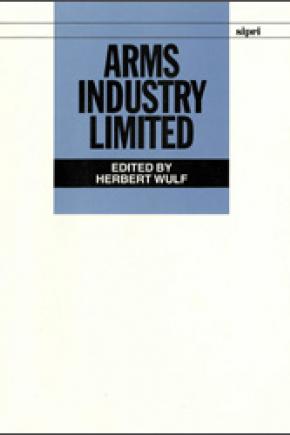Arms Industry Limited
Arms Industry Limited signals the new agenda of the industry that produces weapons. The boom period for the arms industry, nurtured for over forty years by the cold war, is over. While arms-producing companies have experienced previous declines, they were short term and were reversed by the next cycle of massive arms buildups. Today, it would be unrealistic to predict a repeat of the cyclical pattern of ever-increasing military expenditures. Industry has rapidly—within five years—reached a situation in which radical 'down-sizing' of arms production capacities is required. The arms industry has reached its limits under the current political and economic conditions. This book estimates that of the current 15 million jobs in the arms industry world-wide, 3–4 million jobs might be lost between 1993 and 1998.
This compendium of sixteen case studies and a summary chapter presents an overview of the current state of the arms industry and detailed information and statistics on all the major arms production centres. It is an empirical account of the size of the arms industry, the current problems faced by the industry and the various industrial strategies employed to tackle these problems. The interest of SIPRI in this issue stems from the fact that economic pressures have all too often contributed to arms races or have prevented a dynamic disarmament process. The question raised in this book is whether the arms industry will rely heavily on and actively lobby for arms production and arms exports or will be able to convert to non-military production.
Part I. Introduction
1. Arms industry limited: the turning-point in the 1990s
Herbert Wulf
Part II. The United States
2. The United States: trends in defence procurement and research and development programmes
Gordon Adams and Steven M. Kosiak
3. The United States: unmanaged change in the defence industry
Judith Reppy
4. The United States: arms exports and implications for arms production
Ian Anthony
Part III. The former Soviet Union and the successor republics
5. The Soviet Union and the successor republics: defence industries coming to terms with disunion
Julian Cooper
6. The Soviet Union: arms control and conversion—plan and reality
Alexei Izyumov
7. The Soviet Union and the successor republics: arms exports and the struggle with the heritage of the military–industrial complex
Herbert Wulf
Appendix 7A. Soviet arms exports, 1980–91
Prepared by Herbert Wulf
Part IV. Europe
8. Western Europe: facing over-capacities
Herbert Wulf
9. Western Europe: internationalization of the arms industry
Elisabeth Sköns
10. The European Community: from the EC to the European Union
Agnès Courades Allebeck
Appendix 10A. Excerpts from treaties relating to security policy, arms production and arms exports of the European Community
Prepared by Agnès Courades Allebeck
11. Poland: declining industry in a period of difficult economic transformation
Maciej Perczynski and Pawel Wieczorek
12. Czechoslovakia: reductions in arms production in a time of economic and political transformation
Oldrich Cechak, Jan Selesovsky and Milan Stembera
13. Turkey: the arms industry modernization programme
Gülay Günlük-Senesen
Part V. Other countries
14. The People's Republic of China: arms production, industrial strategy and problems of history
John Frankenstein
15. Japan: a latent but large supplier of dual-use technology
Masako Ikegami-Andersson
16. Australia: an emerging arms supplier?
Graeme Cheeseman
17. The 'third tier' countries: production of major weapons
Ian Anthony
Annexe A. Yugoslavia: arms production before the war
Herbert Wulf
Annexe B. Bibliography of works on arms production
Prepared by Espen Gullikstad

